
IC 1011 is a barred spiral galaxy with apparent magnitude of 14.7, and with a redshift of z=0.02564 (SIMBAD) or 0.025703 (NASA), yielding a distance of 100 to 120 megaparsecs. Its light has taken 349.5 million years to travel to Earth. IC 1011's calculated age is approximately 12.95 billion years. The IC designation comes from the Index Catalogue.

NGC 7002 is a large elliptical galaxy around 320 million light-years away from Earth in the constellation of Indus. The galaxy was discovered by English astronomer John Herschel on September 30, 1834. NGC 7002 is also part of a group of galaxies that contains the nearby galaxy NGC 7004.
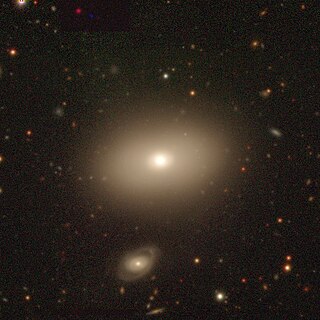
NGC 7302 is a lenticular galaxy located around 124 million light-years away from Earth in the constellation of Aquarius. NGC 7302 was discovered by British astronomer William Herschel on October 3, 1785 and was rediscovered by American astronomer Lewis Swift on August 8, 1896 and was listed in the IC catalogue as IC 5228. It is also part of a group of interacting galaxies.

NGC 7080 is a barred spiral galaxy located about 204.5 million light-years away in the constellation of Vulpecula. It has an estimated diameter of about 100,000 light-years which would make it similar in size to the Milky Way. NGC 7080 was discovered by astronomer Albert Marth on September 6, 1863.

NGC 4633 is a spiral galaxy located about 70 million light-years away in the constellation of Coma Berenices. It is interacting with the nearby galaxy NGC 4634. NGC 4633 was discovered by astronomer Edward D. Swift on April 27, 1887. It was rediscovered on November 23, 1900, by astronomer Arnold Schwassmann and was later listed as IC 3688. NGC 4633 is a member of the Virgo Cluster.

NGC 4540 is a spiral galaxy with type 1 Seyfert activity located about 64 million light-years away in the constellation Coma Berenices. NGC 4540 was discovered by astronomer William Herschel on March 21, 1784 and is a member of the Virgo Cluster.

NGC 3285 is a barred spiral galaxy located about 200 million light-years away in the constellation Hydra. The galaxy was discovered by astronomer John Herschel on March 24, 1835. NGC 3285 is a member of the Hydra Cluster.

NGC 4895 is a lenticular galaxy located 330 million light-years away in the constellation Coma Berenices. The galaxy was discovered by astronomer Heinrich d'Arrest on May 5, 1864 and is a member of the Coma Cluster.

NGC 530, also known as IC 106, is a lenticular galaxy in the constellation Cetus. It is approximately 226 million light years from the Milky Way and has a diameter of around 100,000 light years. The object was discovered on November 20, 1886, by the American astronomer Lewis A. Swift, who listed it as NGC 530, and rediscovered on November 16, 1887, by Guillaume Bigourdan, who listed it as IC 106.

IC 158 is an elliptical galaxy in the constellation of Cetus. The galaxy was discovered on December 14, 1892, by French astronomer, Stephane Javelle. According to Javelle, when he first saw the object, he described it as faint, small and round with a brighter middle. It has an approximate diameter of 200,000 light-years making it larger compared to the Milky Way. IC 158 is located 700 million light-years away from the solar system and is moving away at the speed of 15,678 kilometers per second.
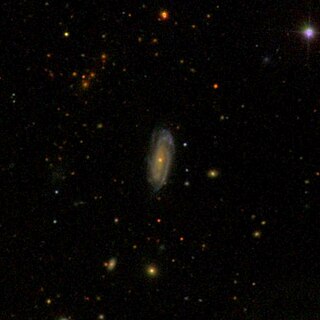
IC 3686 is a Sc type spiral galaxy located 920 million light-years from the solar system in the constellation of Virgo. It was discovered by American astronomer, Royal Harwood Frost on May 10, 1904. Frost described it as magnitude 14.3 and RA 12 42 at 36.0, Dec +11 44 22. IC 3686 has an estimated diameter of 270,000 light-years making it larger compared to the Milky Way. and is classified as LINER-type active galactic nucleus galaxy according to SIMBAD. Despite listed in the Virgo Cluster catalogue as VCC 1927, it is not a member of the Virgo Cluster but a background galaxy.
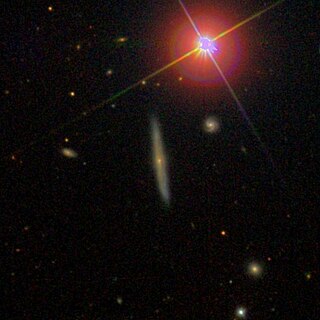
IC 3402 is an edge-on, type Sbc spiral galaxy located 370 million light-years away from the solar system in the Coma Berenices constellation. IC 3402 has an estimated diameter of 135,000 light-years and was first discovered by a German astronomer Max Wolf on March 23, 1903. The galaxy does not have an active galactic nucleus.
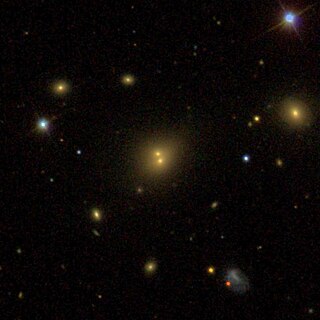
IC 3441 is a type ES-0 lenticular galaxy with a bar located 880 million light-years away from the solar system in the constellation of Coma Berenices. IC 3441 was discovered on March 23, 1903, by the astronomer Max Wolf and it does not have an active galactic nucleus or an indication of star formation.
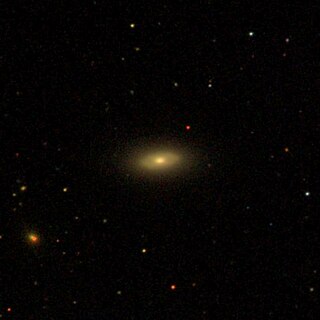
IC 831 is a type E-S0 elliptical galaxy located 300 million light-years away from the Solar System in the constellation of Coma Berenices. It is estimated to be 60,000 light-years in diameter and was first discovered on 25 February 1892 by Rudolf Spitaler, an Austrian astronomer. It is not known whether it has an active galactic nucleus.

NGC 2485 is a spiral galaxy located in the constellation of Canis Minor. It is located 233 million light-years away from Earth and has an estimated diameter of 110,000 thousand light-years. NGC 2485 was discovered on March 25, 1864, by Albert Marth and has an approximate surface magnitude of 13.08.
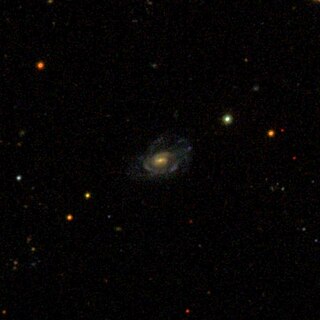
IC 3038 is a type Sab spiral galaxy located in the Virgo constellation. It is located 940 million light-years from the Solar System. The galaxy has an approximate diameter of 220,000 light-years, thus making it larger compared to the Milky Way. IC 3038 was found by Royal Harwood Frost on 7 May 1904. It has an apparent magnitude of 16p and located at right ascension of and declination. Although listed in the Virgo Cluster catalogue as VCC 57, it is not part of the Virgo Cluster, but instead a background galaxy.
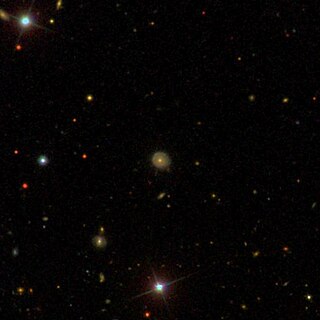
IC 4000 known as PGC 2152407, is a type Sbc spiral galaxy with a ring in the constellation of Canes Venatici. It is located 1.5 billion light-years away from the solar system and has an estimated diameter of 100,000 light-years which is the same length as the Milky Way. IC 4000 was discovered by Max Wolf on March 21, 1903. It has a surface brightness of 23.3 magnitude/arc seconds and located right ascension (12:59:36.62) and declination (39:35:15:90).
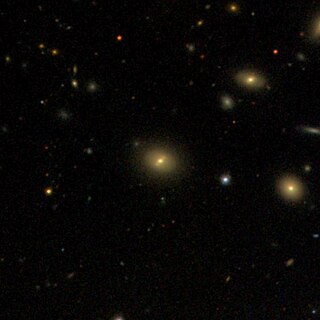
IC 4026 is a type S0 lenticular galaxy with a bar located in Coma Berenices. It is located 315 million light-years away from the solar system and has an approximate diameter of 70,000 light-years which is less the size of the Milky Way. IC 4026 was discovered on May 11, 1896, by astronomer Hermann Kobold and is a member of the Coma Cluster. It has a surface brightness of 11.99 mag/arcsecs meaning it is a high surface brightness galaxy.

IC 535 known as PGC 26524 and PGC 1128295, is a type E elliptical galaxy with a ring located in the Hydra constellation. It is located 740 million light-years away from the solar system and has an estimated diameter of 85,000 light-years. IC 535 was discovered on March 23, 1893, by Stephane Javelle. It has a surface brightness of 23.7 mag/arcsec and is moving at radial velocity of 16,049 kilometers per seconds. It is located at right ascension and declination.
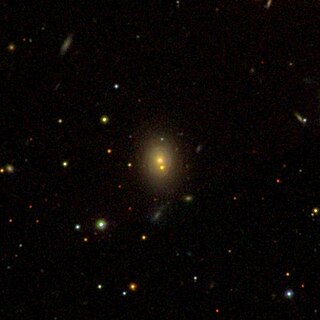
IC 1185 is a type Sab spiral galaxy located in Hercules. It is located 420 million light-years from the solar system and has an approximate diameter of 115,000 light-years. IC 1185 was discovered on June 8, 1888, by astronomer Guillaume Bigourdan and is a member of the Hercules Cluster. IC 1185 has a surface brightness of magnitude 22.7 and presents a double nucleus, which might represent a late stage of galaxy merger.




















